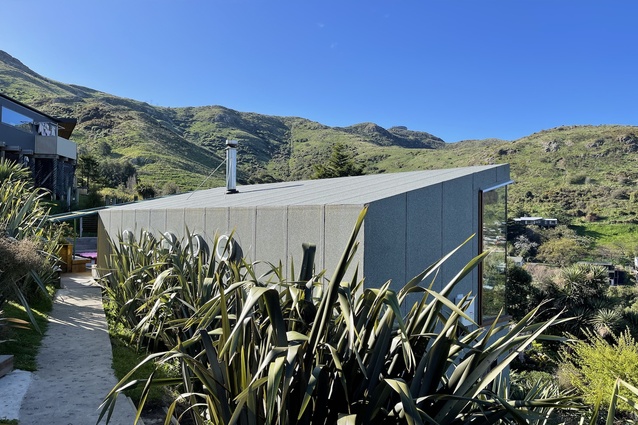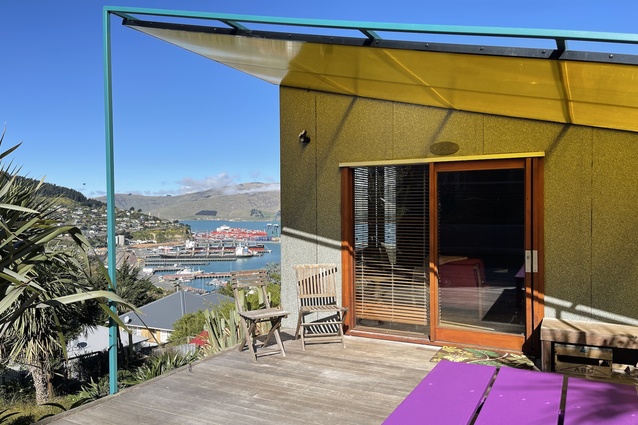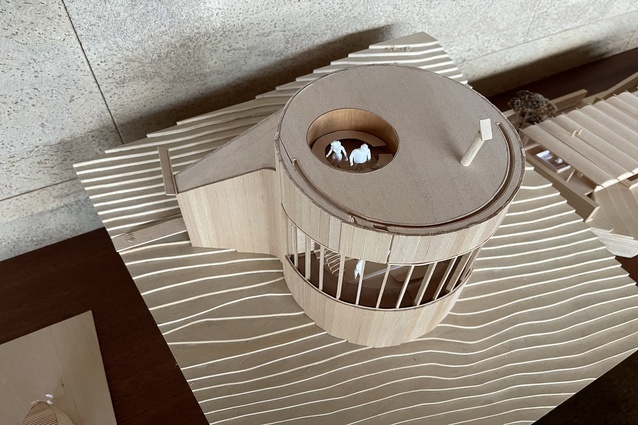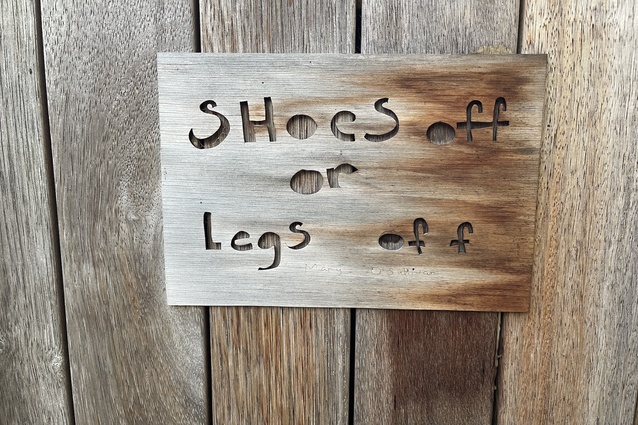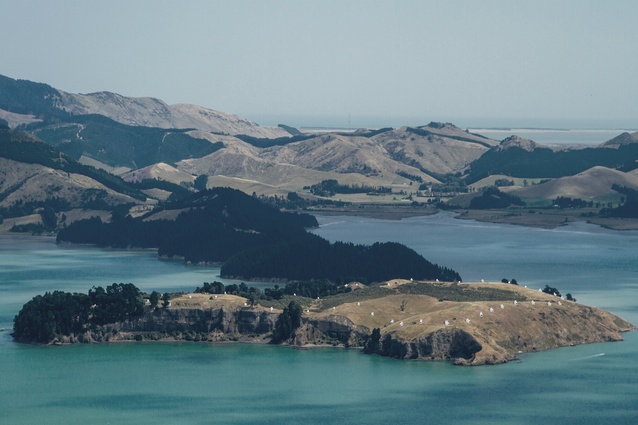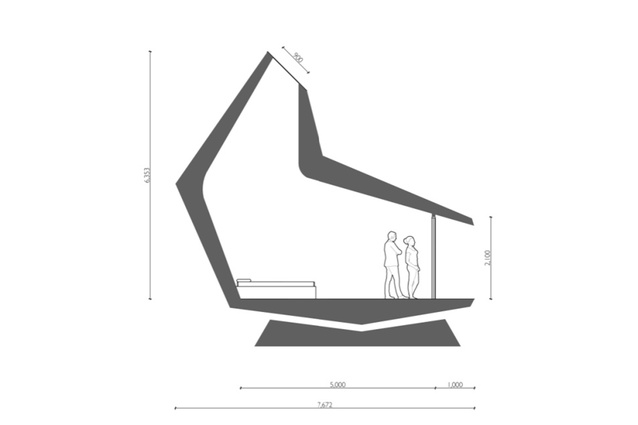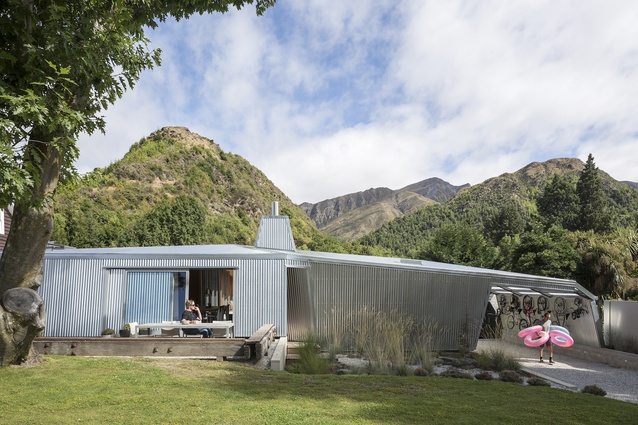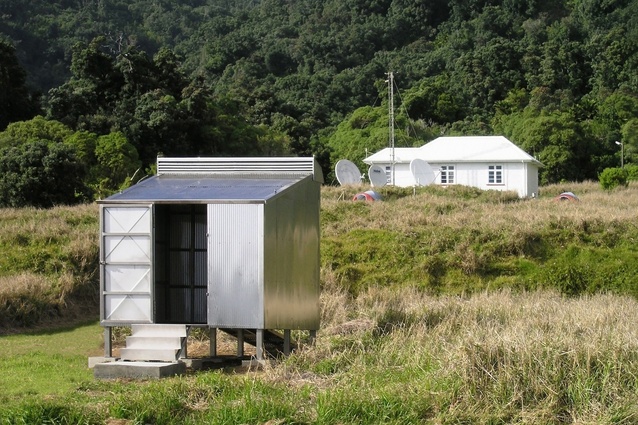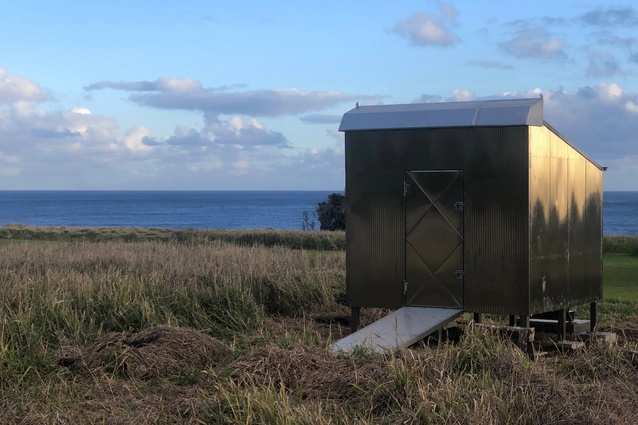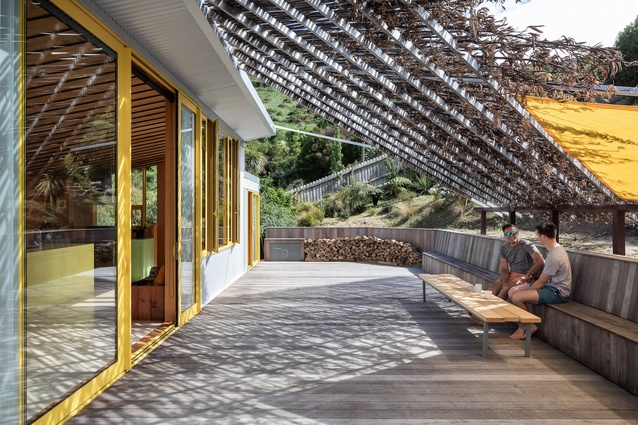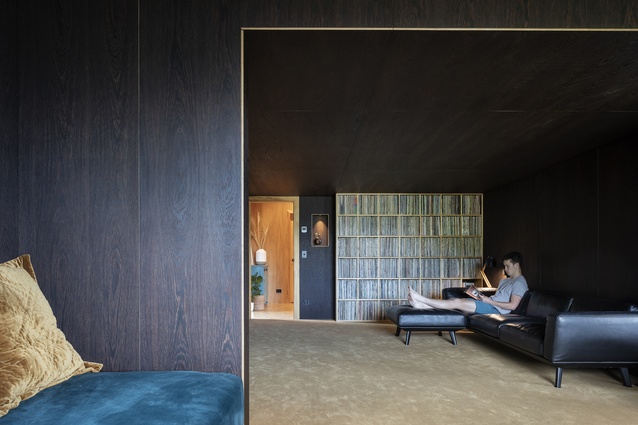Futuna Lecture 2022 – Michael O’Sullivan
Michael O’Sullivan of Bull O’Sullivan Architecture delivered this year’s Futuna Lecture in Auckland, Wellington and Christchurch – the 12th in the series. Architect, co-editor of Futuna: Life of a Building and Chair of Friends of Futuna Trust Nick Bevin describes the man on tour and we share John Walsh’s thoughts on the Auckland lecture.
The annual Futuna Lecture Series has always been a bit of a ‘road’ trip for me, as I escort and host the Futuna Lecturer around the country. This time it was reversed. I found myself being hosted and escorted by Michael, staying in his family home in Mangere Bridge and also in the B/OS Guest House at the Studio in Lyttelton.
Shared meals, cups of tea, meeting clients and studio colleagues, site visits and the impromptu walks and talks and sampling of local produce. I was exhausted and energised at the same time and am very grateful for the opportunity to have spent some time with Michael and his family and colleagues, seeing him in action in the Studio, and on the water of Lyttleton Harbour, and also for being able to experience the B/OS architecture physically and emotionally. The dedication and passion of the studio teams in Auckland and Lyttelton are palpable.
Out and about on tour, we were constantly accompanied by Michael’s playlist that, for two days, seemed to consist entirely of the Australian singer/songwriter/storyteller Paul Kelly. Michael, like Paul Kelly, is also from Irish stock and can build very good stories that can sing.
We are blessed and grateful that John Walsh was able to write a review of Michael’s Auckland lecture.
(Watch the Futuna Lecture at the Futuna Chapel in Wellington from Saturday 24 September below).
John Walsh writes:
It was a full house for the Auckland iteration of the 2022 Futuna Lecture, a full church, actually, as architecture practitioners and enthusiasts gathered at St Matthew-in-the- City for a presentation by Michael O’Sullivan, co-founder, with Andrew Bull, of Bull O’Sullivan Architecture. The Gothic Revival St Matthew’s has the auditory and observatory qualities of a building designed to deliver a liturgy rather than a lecture but, these challenges aside, the venue for the Futuna Trust’s annual set-piece event was perfectly fitting. O’Sullivan’s work, as attested by numerous awards, is entering the architectural canon but, under St Matthew’s soaring vaults, it seemed appropriate to consider whether the architect might be destined for an altogether different canonisation.
O’Sullivan would have no time for such speculation, but renunciation of sanctity is just what you’d expect from the righteous. If any architect in Aotearoa is fighting the good fight, it’s Michael O’Sullivan. For that reason, he was an ideal choice to give a talk named in honour of the most celebrated work by the much-loved and -admired John Scott (1924–1992). Watching O’Sullivan at the lectern, flipping through his practice’s portfolio, you get the impression of a wrestler in action, grappling with all the demons – not all of them lurking in the details – that bedevil any architectural project. O’Sullivan’s way is not a halfway; when he takes on a job, he’s all in. He’s going to pin that project to the floor, whether it’s a family home on Waiheke, a Pasifika church in south Auckland, a kōhunga reo in Christchurch, or a weather station on Raoul Island – to cite just a few of the projects he discussed in his Futuna Lecture.
In the course of an O’Sullivan project, all of its participants are swept into the vortex of his commitment. Clients become whanau, and builders and consultants become friends. In his Futuna Lecture, O’Sullivan made frequent acknowledgment of the tradespeople who have turned his drawings into buildings. For this builder’s son, manual work is ennobling, and he takes a lot of pleasure in the physical processes of architecture. Bull O’Sullivan Architecture is a model-making office which also prototypes building systems. One of the projects O’Sullivan talked about at St Matthews was a portable emergency shelter he designed for use in Tonga after the tsunami disaster at the beginning of this year. (The New Zealand government’s bureaucrats weren’t interested – the irresistible force had met the immovable object.)
O’Sullivan also has a habit of finding and specifying materials that don’t cost a fortune but look like they might – the Portuguese cork used on the ceiling of a Wesleyan church in Christchurch, for example. The point is not to deploy unusual products for their own sake or demonstrate arcane architectural awareness – although the whole point of engaging an architect is to access specialist knowledge – but to enrich the experience of habitation. Delight is an essential quality of architecture, a dictum set down 2,000 years ago by that hard-arse Roman architect and siege engineer, Marcus Vitruvius Pollio, and ignored ever since by legions of desultory designers.
It’s not easy, breathing delight into a design and then trying to incorporate it in a building. Even O’Sullivan’s resilience is frequently tested; as he said in his Futuna Lecture, “hope is a dangerous word in the world of architecture”. On every project, though, no matter how pragmatic its purpose or limited its budget, O’Sullivan explores architecture’s poetic possibilities. Many designers metaphorise their work, and the exercise is often unconvincing, especially when architects venture into cultural territory with all the fluency of tourists essaying their language app phrases on a waiter in a Parisian restaurant. But O’Sullivan is completely unselfconscious and matter-of-fact in his pursuit of the numinous. He wants his buildings to do their job, and part of that job is to inspire deeper feelings, make room for higher thoughts.
For O’Sullivan, architecture is a social act. His practice’s process is collaborative, although he knows his own mind and will robustly defend the design integrity of his projects. Each of his commissions is another wagon starting out on the trail to a promised land, with O’Sullivan gripping the reins and aiming to stay on track in the face of obstacles and assailants. The contemporary construction landscape requires adroit as well as determined navigation; lying in wait are material and labour shortages, price hikes and supply hold-ups, not to mention litigious neighbours, pedantic planners, seismic surprises and climate collapse. All things considered, it’s not the most promising prospect for a delightful outcome, but, while looking out, O’Sullivan never forgets to also look up. Heaven’s above; if O’Sullivan’s architecture does echo a poetic voice, it’s surely that of the late, great Seamus Heaney, perhaps as it is heard in his Hibernian-accented rendering of the classic drama pitting higher loyalty against pragmatic obedience, A Burial at Thebes: A Version of Sophocles’ Antigone: “Be the necklace-fire of stars, / The cauterizing lightning. / Bewilder us with good.”



